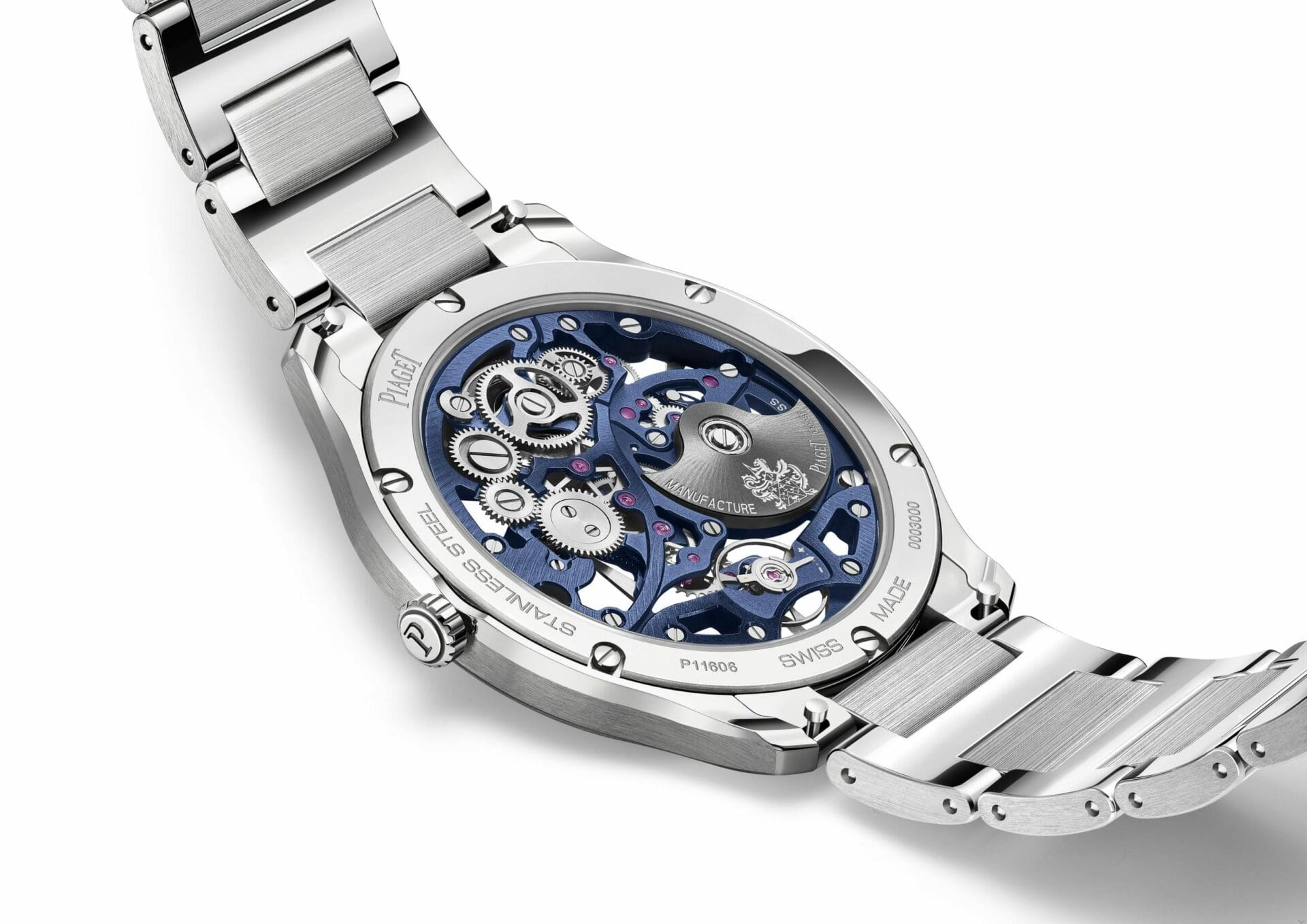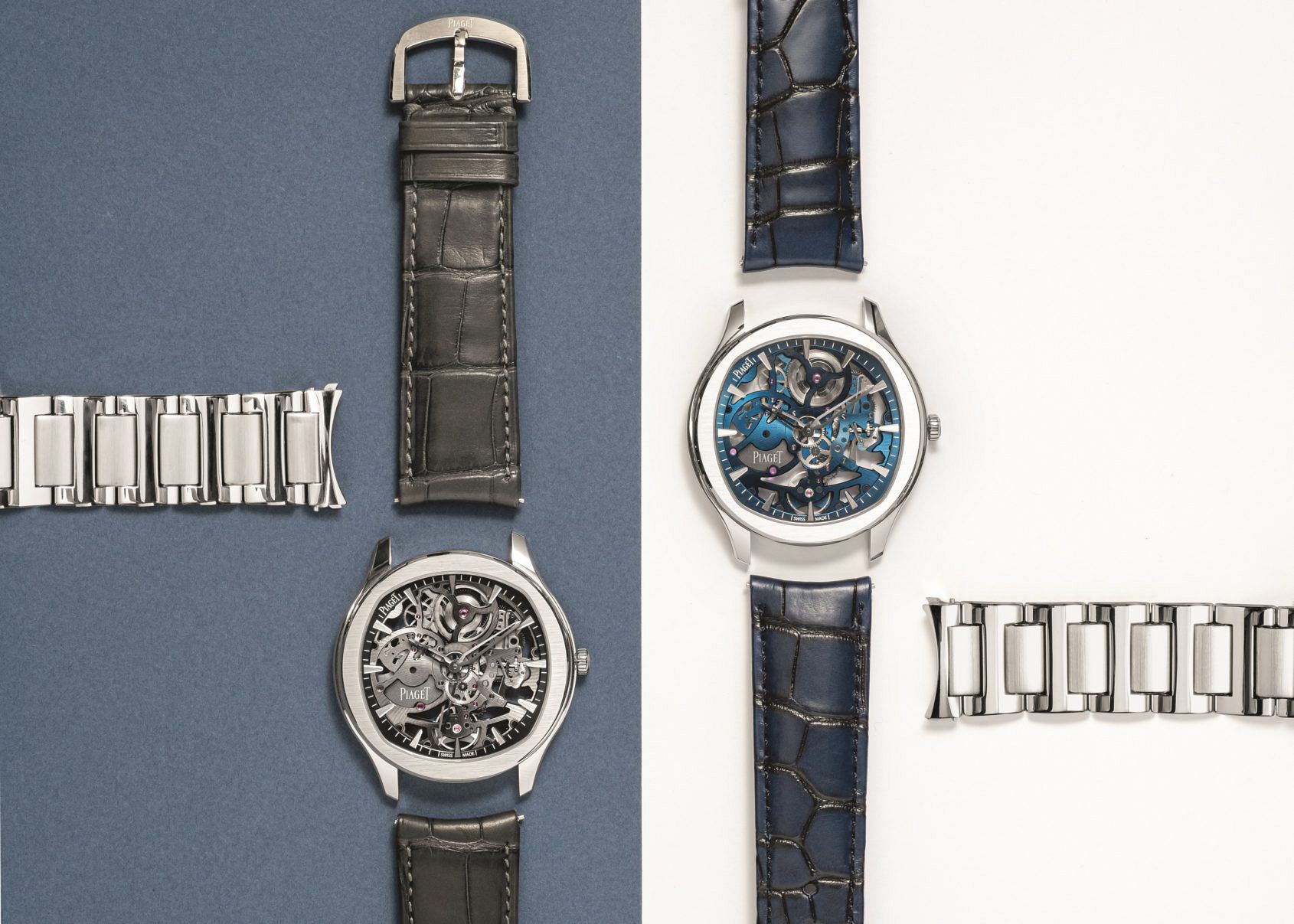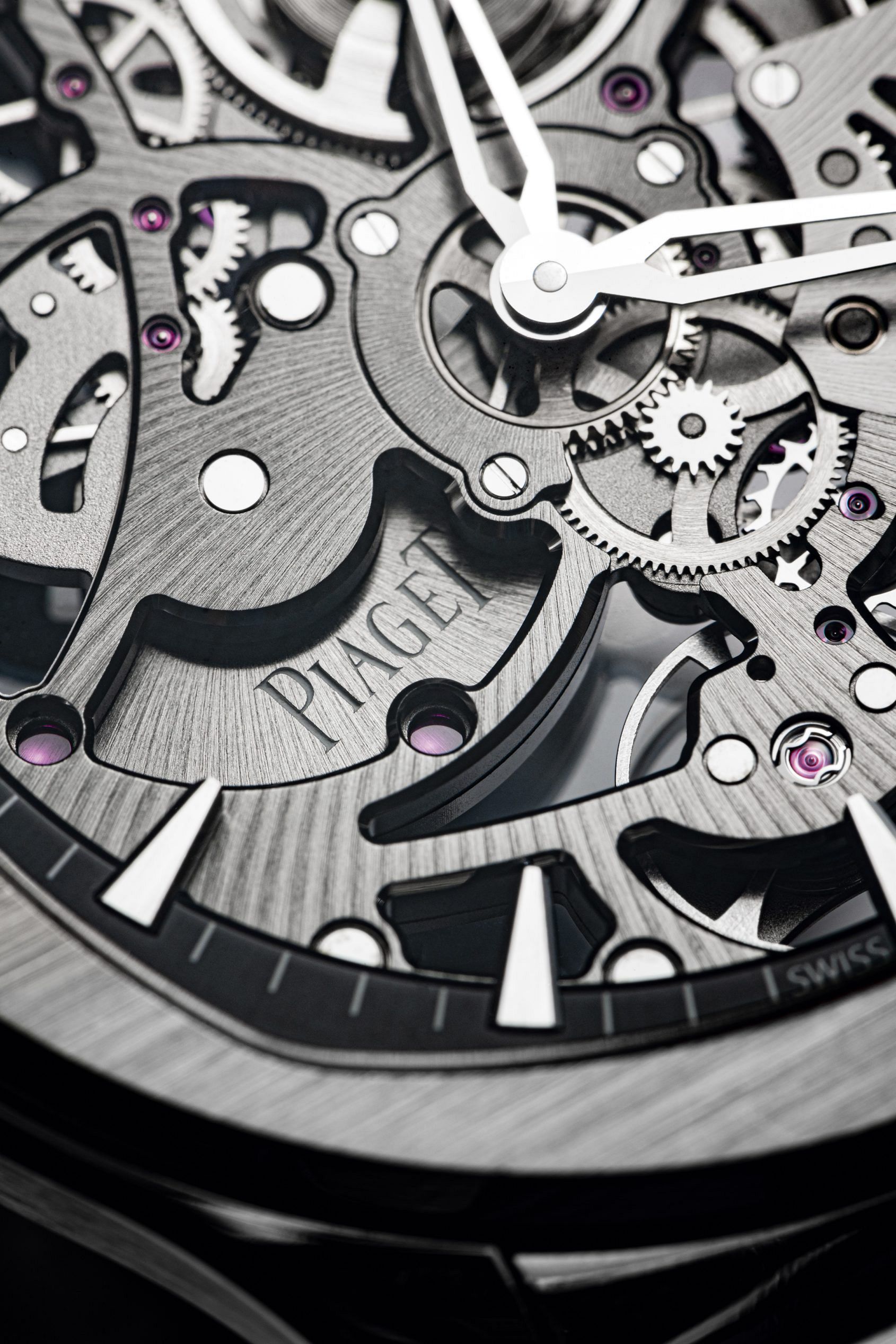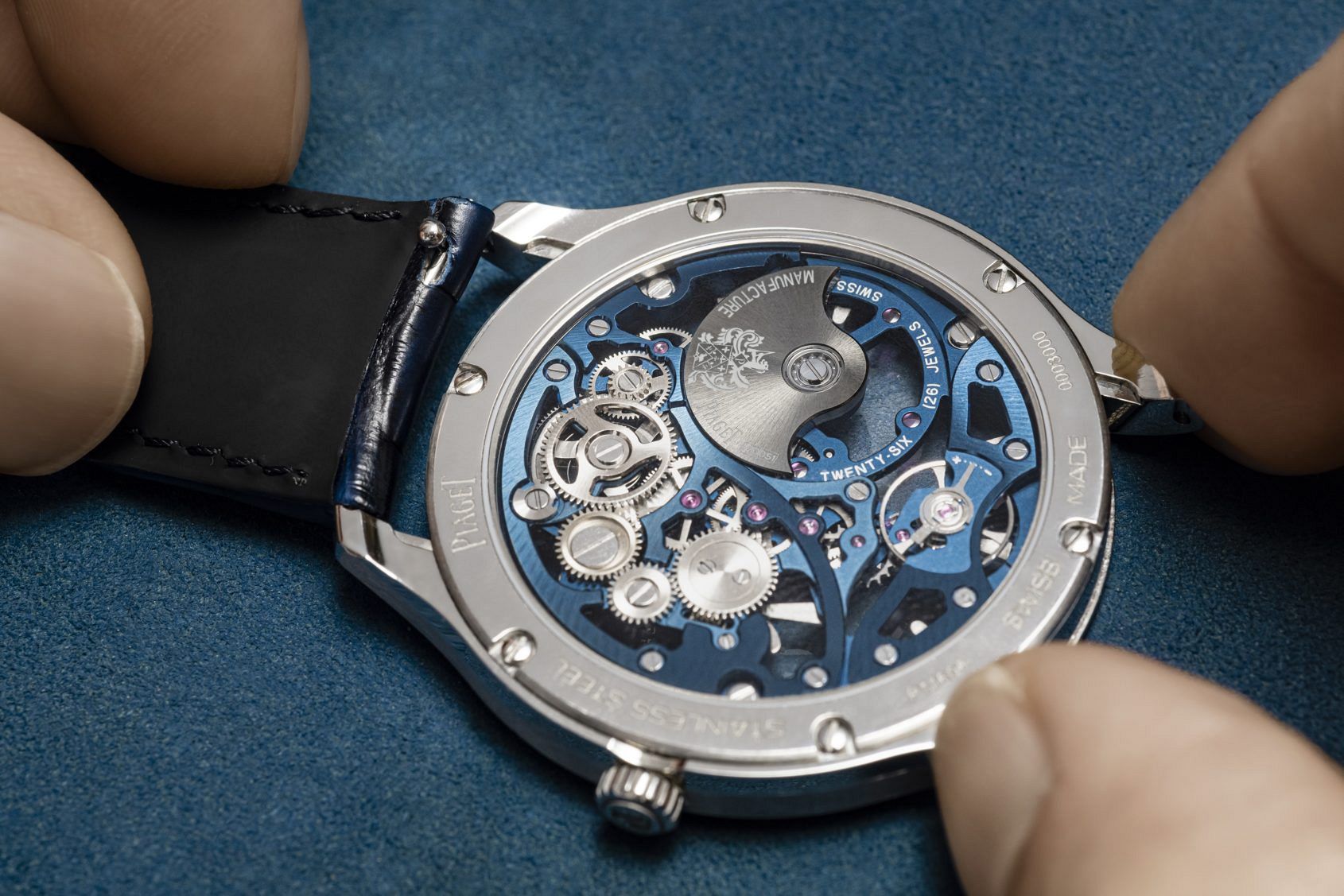INTRODUCING: The Piaget Polo Skeleton watch is now 30% thinner at 6.5mm thick
Zach BlassThe Piaget Polo was first introduced in 1979, inspired by the jet-setting lifestyle and where luxury met sport. Its release coincided with Piaget becoming a sponsor for Polo tournaments around the world. Yves Piaget personally loved to attend these events, their glamour, sport, and spontaneity inspiring the Polo watch design. The Piaget Polo watch has changed a great deal since its release over 4 decades ago, the 2016 Piaget Polo S bringing the watch into a more price approachable metal and modern format. It was a tad controversial at the time, with some drawing comparisons to the integrated designs of Audemars Piguet and Patek Philippe. Regardless of where you stand in that conversation, today the collection introduces a watch irrefutably tied to Piaget’s identity: the Piaget Polo Skeleton.
When discussing the art of ultra-thin watchmaking, Piaget is invariably part of the conversation. Other manufacturers produce super thin watches, sure, but the pursuit for the ultimate in thin ultra-thin watchmaking is a core component of Piaget’s heritage. In 1957, Piaget introduced their renowned ultra thin caliber 9P which was only 2mm thick. Three years later, they introduced the 12P movement – the world’s thinnest self winding movement at the time with a thickness of only 2.3mm.
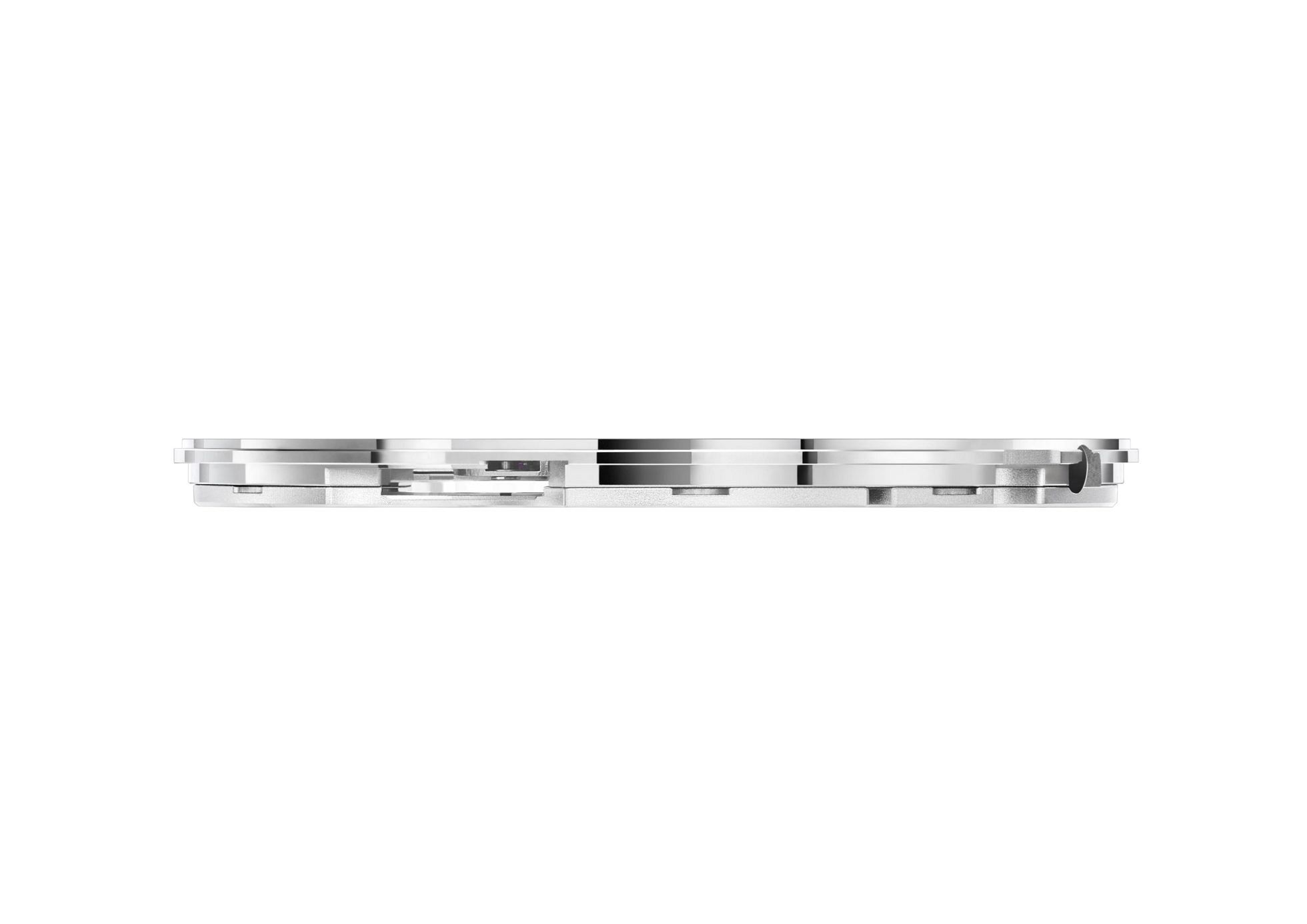
As the decades past, they upheld ultra-thin watchmaking as part of their core identity and by 2014 the Maison was home to 37 in-house movements, 25 of which were ultra thin calibers. Of the 25, 12 movements, for a time, were record-holders for thinness. Last year we saw the ultimate tribute to Piaget’s story, developing an entire watch as thin as the 9P caliber that started this watchmaking journey: the Piaget Ultimate Concept – which later won the “Aiguille D’or” Grand Prize at the 2020 GPHG for its record breaking case thickness of only a mere 2mm.
Now Piaget has decided to further branch their ultra-thin watchmaking identity into their Polo watch. The Piaget Polo S was already quite slender for a sports watch, with a thickness of 9.4mm. The Piaget Polo Skeleton is 30% thinner than its predecessor, retaining a case that is 42mm in diameter but now trimmed down to 6.5mm thick.
View this post on Instagram
For those who would think 42mm is too large for their wrists, the previous Polo S, also 42mm in diameter, had a lug to lug of approximately 47mm across the wrist. Considering the new Piaget Polo Skeleton shares the same compact lug profile, it’s safe to assume the watch is far more wearable than its diameter suggests.
The Polo Skeleton shares the same case design language as the Polo S. The watch profile to some is reminiscent of the porthole inspired Nautilus, but if anything most of its finishes are the inverse. Literally. The satin brush of the bezel goes across the watch from 9′ to 3′, instead of a vertical brush from ’12 to 6 found the on the bezel of a Nautilus. Whereas the bracelet of a Nautilus is polished in the center and vertically brushed around the center, the Piaget Polo Skeleton bracelet has a majority high polish finish with its center link satin brushed in the same manner as its bezel across the center link. The middle case beneath the bezel is high polished completely on its front, including the lug hoods, but the caseband is satin brushed. Put more succinctly, there are more high polished elements in the Polo’s design while the Nautilus has more satin brushed elements. Like the Nautilus though, the bezel has a high polish around its perimeter and the sides of the bracelet where you can see the pin and collar system securing each link is satin brushed as well.
Normally I would discuss the movement and the dial separately, but in this instance they are pretty much one and the same. The dial, in terms of elements that usually pertain to one, are confined to the outer perimeter of the inner bezel. Minute hashes frame the skeleton dial, with narrow protruding and pointed trapezoidal indices to signal the hours. The Piaget logo is printed between the 10th and 11th hour indices, with Swiss Made text printed at the conventional location surrounding the 6th hour index. There are two colors to choose from, PVD blue and slate grey. To be honest, the render above does not best represent the color of the slate grey, as the outer portion of the dial with the hours and minutes track is almost black and is visually dark than the slate grey finish of the movement.
The majority of what you see on the dial is the 2.4mm thick in-house Piaget caliber 1200S, the thinnest automatic skeleton movement when it was originally released. Being a skeleton movement, you can see everything on full display from both the dial and exhibition sapphire caseback. At 12′ you can see the mainspring and as you work your way down the gear train to 6′ you can then see the balance wheel ticking away
The 26 jewel movement has satin brushed plates and bridges that are hand bevelled and drawn. The wheels are also hand finished, with a circular satin brushed applied to each. While there are two colors available, blue PVD and slate grey, both versions have a slate grey oscillating micro rotor to wind the movement while worn. The movements hast a beat rate of 21,600 vph and a power reserve of 44 hours. One important thing to note and admire, is this movement (originally found in Altiplano watches) actually has a full balance bridge – a known characteristic of robust sports watch movements.
Another neat and new feature introduced to the collection with the Piaget Polo Skeleton is that it is bundled with both a quick-release bracelet and and dial matching quick release strap. One thing I really like about the bracelet is it’s twin triggered butterfly clasp. It’s quite compact, so it does not create unnecessary flared and fixed length on the underside of the bracelet – making it fit much better on smaller wrists. The bracelet has two tabs on its under side, simply push each inward and it is easy to pull the bracelet away from the case without scratching it.
The same goes for the leather strap, with the only difference being that you would simply push the one tab inward to remove the strap.
My one critique for the watch, which is not necessarily fair considering the fact it shaves 30% of its case thickness off, is the downgrade in water resistance. The previous Polo S was 100 meters water resistant while the new Piaget Polo Skeleton is 30 meters water resistant. This means beyond splashes and washing your hands, it is not the safest timepiece to bring into water.
Piaget Polo Skeleton pricing and availability:
The Piaget Polo Skeleton will be available at Piaget boutiques and authorized dealers worldwide. Price: $45,500 AUD.




